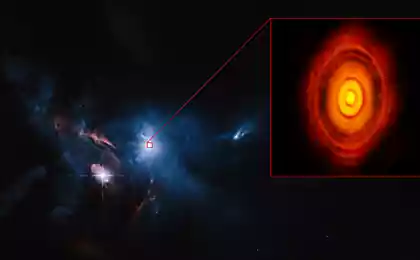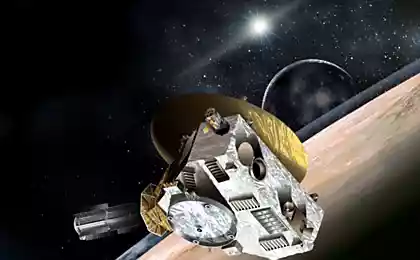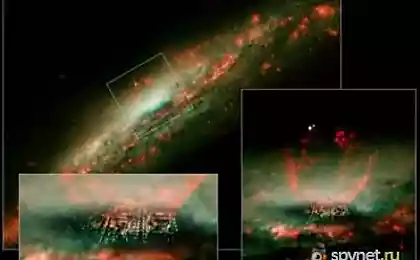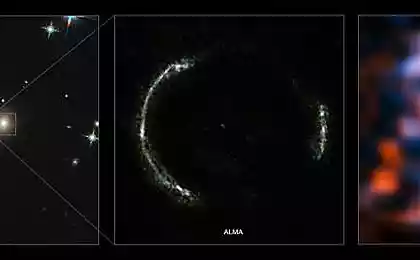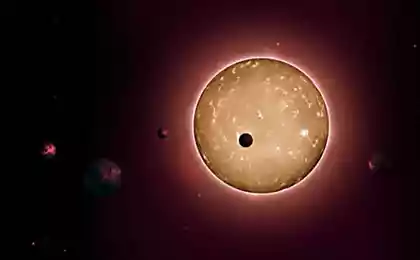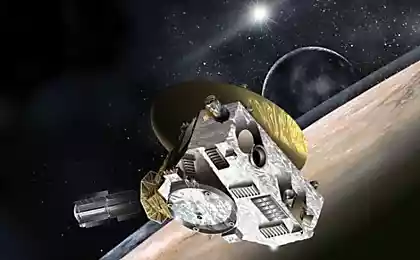1259
ALMA expands horizons: new pictures of the process of planet formation
On Wednesday, November 5, observatory ALMA (Atacama Large Millimeter Array) was released пресс-релиз, where scientists announced reaching a new level in the observation of how planets form around stars. This "gift" the researchers presented the sunlike stars in the constellation of HL Tau Тельца.

As noted in the press release was made possible by such a qualitatively new resolution telescope achieved by spacing the individual antennas of the complex at a distance of 15 kilometers. Scientists say that made a big step forward in understanding how planets form.
The star, presumably, has an age of about 1 million years away from Earth at about 450 light years away and, as noted above, is in the constellation Taurus.
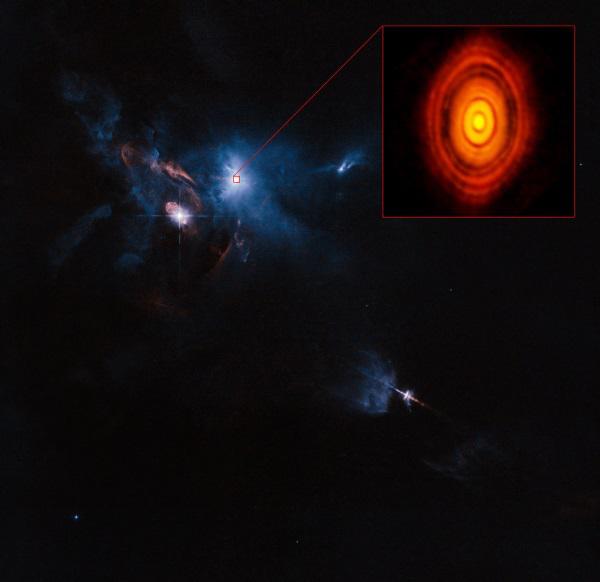
The image shows the location of the stars in the nebula HL Tau i>
Stuart Corder (Stuartt Corder), deputy director of the observatory ALMA, notes that such structure of the disc in the form of dark rings are almost certainly due to the formation of planets. All the more surprising that the existence of a sufficiently massive protoplanetary disk is unusual for such young stars.
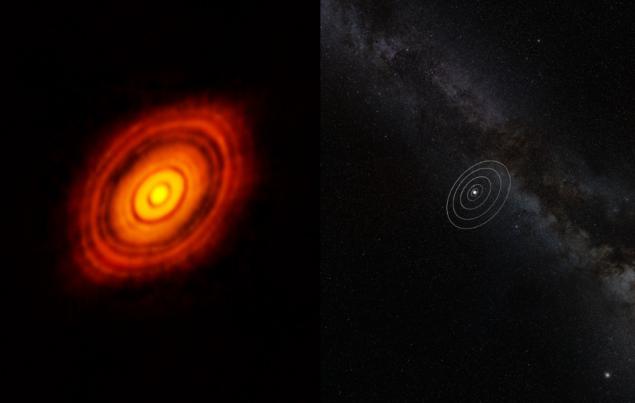
The image shows a comparison of the size of the protoplanetary disk stars HL Tau and the solar system. Although the star is much smaller than the Sun, the radius of its disk is three times greater than the distance from the Sun to Neptune i>
In the visible spectrum of the star is hidden from the observer a massive cloud of gas and dust, but due to the capabilities of the telescope in the wavelength range from 0, 3 and 9, 6 mm was made possible as a clear observation of objects that are in the cloud. The findings not only confirm prior hypotheses about the process of planet formation, but also point out that similar processes can occur much faster than expected.
UPD ( Akuji_bwn ):
// player.vimeo.com/video/110940294 video>
Reference: ALMA (Atacama Large Millimeter Array) - international project, whose goal is the construction of the largest astronomical observatory in Chile. October 1, 2013 it was announced that the delivery of the last, the 66th of the antenna on the Chajnantor plateau. Antennas themselves are radio telescopes diameter from 7 to 12 meters each. For correlation teamwork all antennas installed on the station supercomputer capable of performing 17 quadrillion operations per second. I>
Source: site observatory ALMA. I>
Source: geektimes.ru/post/241112/

As noted in the press release was made possible by such a qualitatively new resolution telescope achieved by spacing the individual antennas of the complex at a distance of 15 kilometers. Scientists say that made a big step forward in understanding how planets form.
The star, presumably, has an age of about 1 million years away from Earth at about 450 light years away and, as noted above, is in the constellation Taurus.

The image shows the location of the stars in the nebula HL Tau i>
Stuart Corder (Stuartt Corder), deputy director of the observatory ALMA, notes that such structure of the disc in the form of dark rings are almost certainly due to the formation of planets. All the more surprising that the existence of a sufficiently massive protoplanetary disk is unusual for such young stars.

The image shows a comparison of the size of the protoplanetary disk stars HL Tau and the solar system. Although the star is much smaller than the Sun, the radius of its disk is three times greater than the distance from the Sun to Neptune i>
In the visible spectrum of the star is hidden from the observer a massive cloud of gas and dust, but due to the capabilities of the telescope in the wavelength range from 0, 3 and 9, 6 mm was made possible as a clear observation of objects that are in the cloud. The findings not only confirm prior hypotheses about the process of planet formation, but also point out that similar processes can occur much faster than expected.
UPD ( Akuji_bwn ):
// player.vimeo.com/video/110940294 video>
Reference: ALMA (Atacama Large Millimeter Array) - international project, whose goal is the construction of the largest astronomical observatory in Chile. October 1, 2013 it was announced that the delivery of the last, the 66th of the antenna on the Chajnantor plateau. Antennas themselves are radio telescopes diameter from 7 to 12 meters each. For correlation teamwork all antennas installed on the station supercomputer capable of performing 17 quadrillion operations per second. I>
Source: site observatory ALMA. I>
Source: geektimes.ru/post/241112/
Rosetta photographed the dark side of the comet Churyumov-Gerasimenko
The new product from Amazon - Echo

